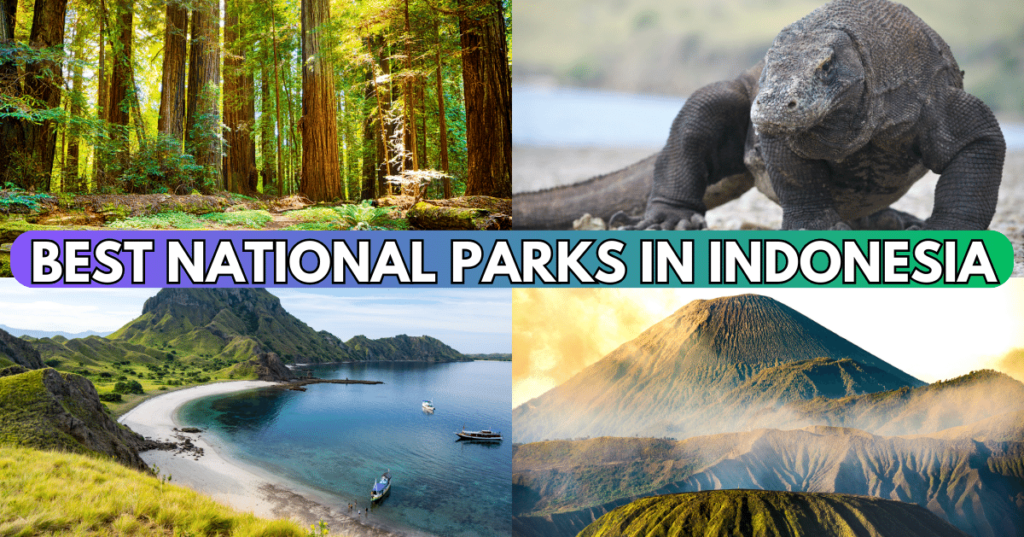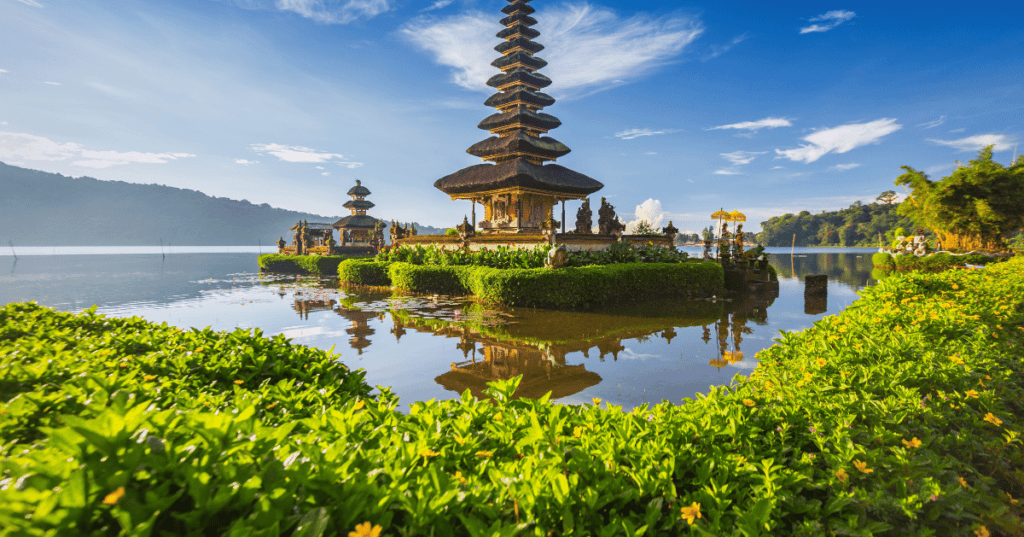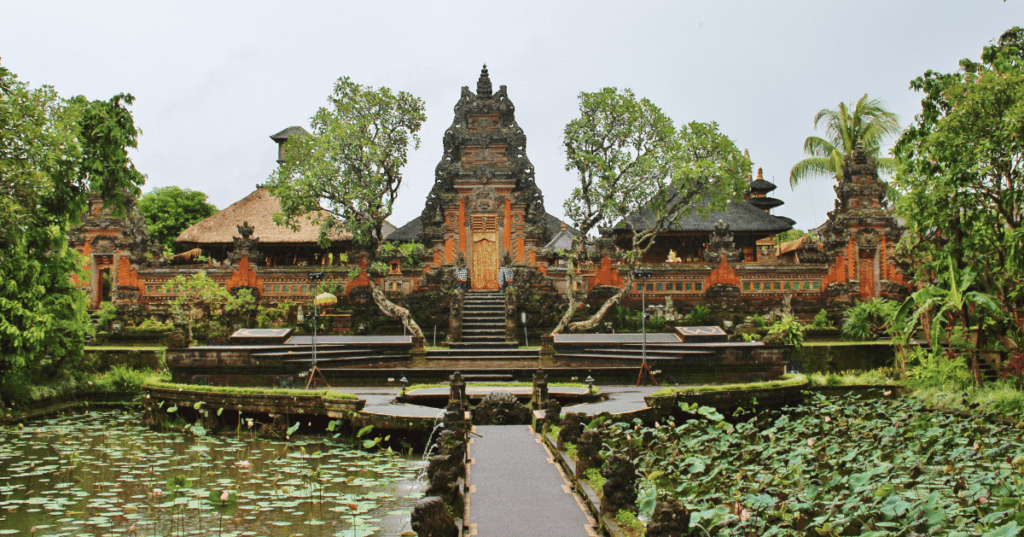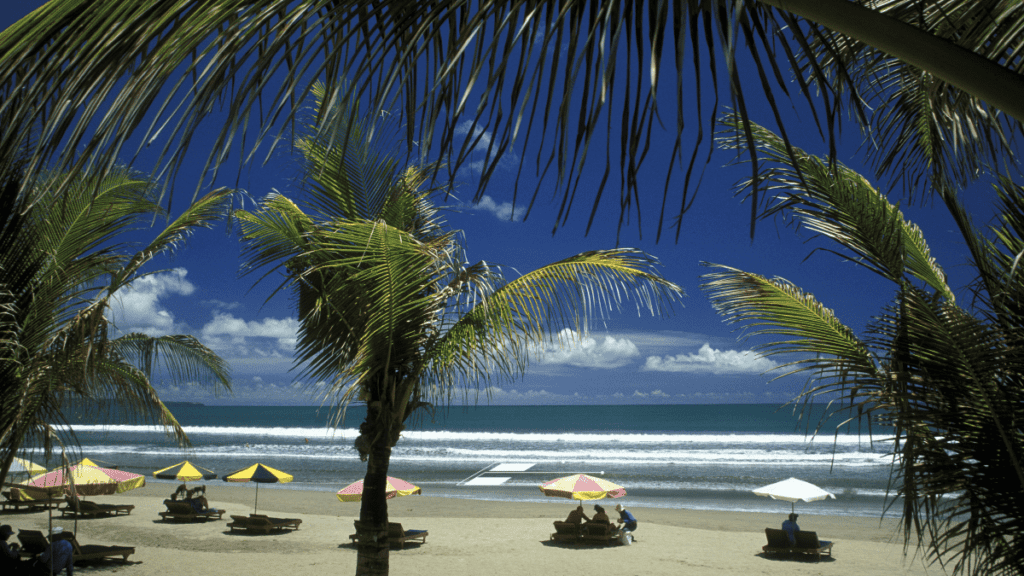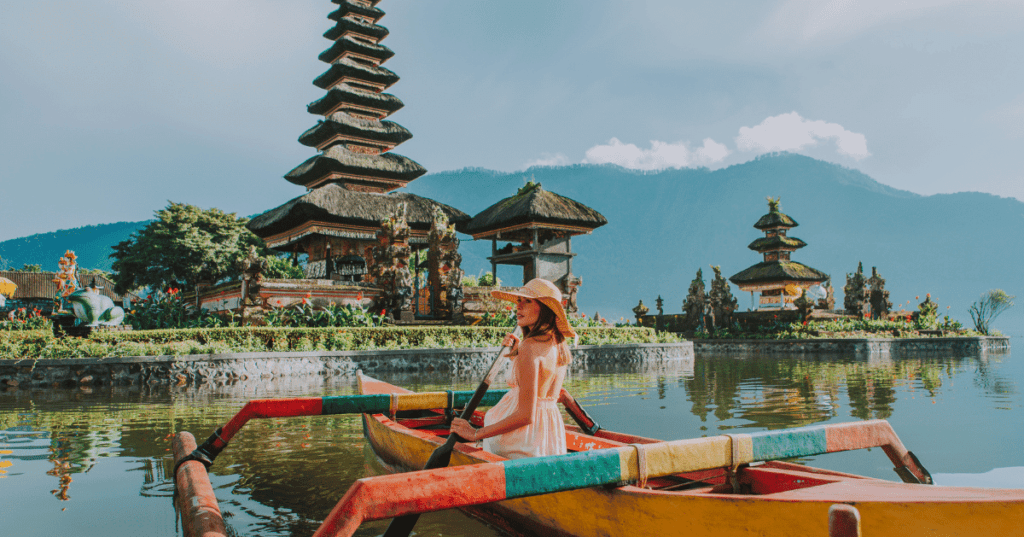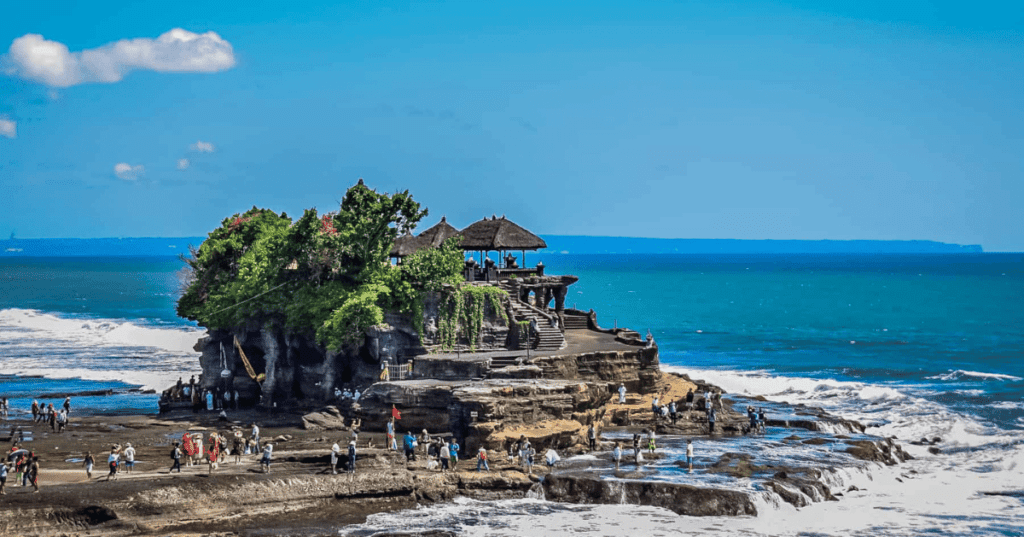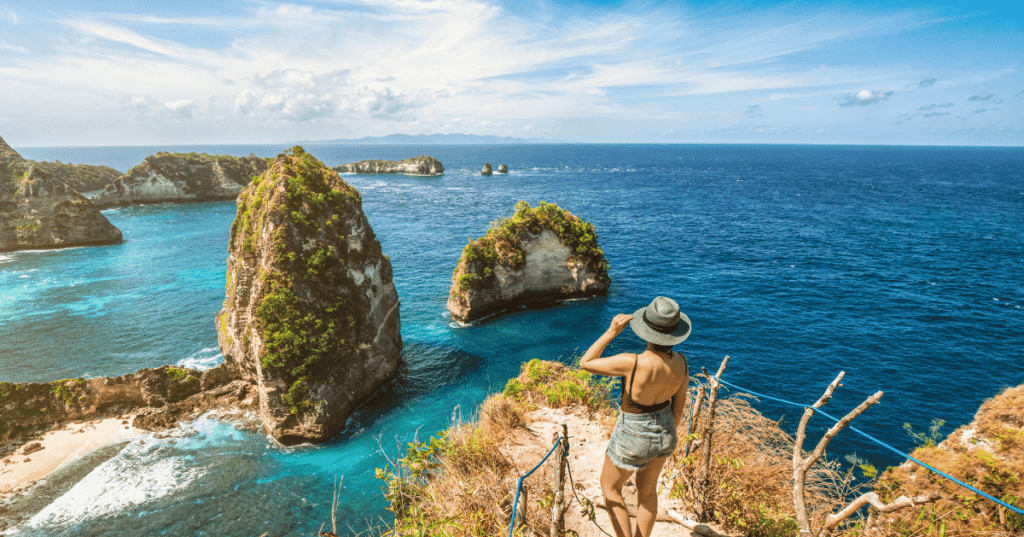Indonesia is known for its stunning natural landscapes and biodiversity, is a paradise for nature lovers and adventurers alike. As a solo traveler, I have explored some of the beautiful National parks in Indonesia and experienced the beauty and adventure.
In this blog you will discover the top 10 national parks in Indonesia that you must visit in 2024.
You’ll find practical tips for solo travelers, including accommodation options, transportation, and must-try experiences. So, pack your bags and get ready for an unforgettable journey through Indonesia’s most spectacular natural wonders.
Indonesia Has Some of the Best National Parks
Indonesia’s national parks are not only breathtakingly beautiful but also offer a glimpse into the country’s rich biodiversity. From lush rainforests to towering mountains and pristine beaches, each park has its unique charm and attractions.
Whether you’re a wildlife enthusiast, a hiker seeking adventure, or simply looking to immerse yourself in nature, Indonesia’s national parks have something for everyone.
#1. Komodo National Park
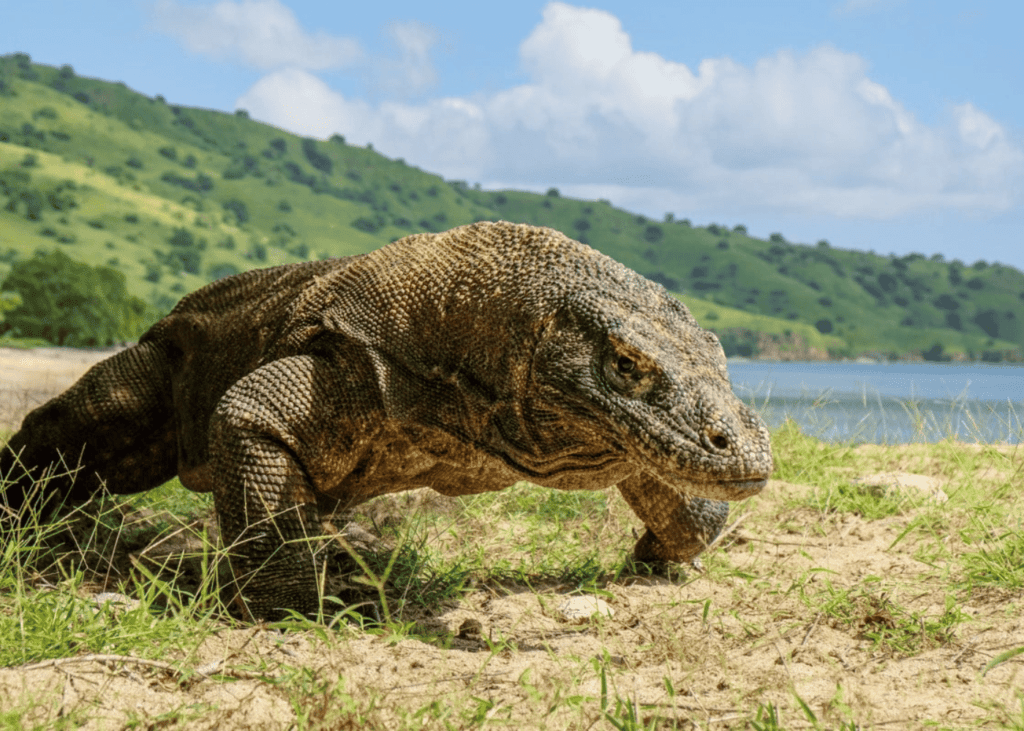
Komodo National Park is located in the Lesser Sunda Islands, Komodo National Park is a UNESCO World Heritage Site and Biosphere Reserve known for its unique wildlife and stunning landscapes.
The park was established in 1980 to protect the endangered Komodo dragon, the world’s largest lizard, and its habitat. In addition to the Komodo dragon, the park is home to a variety of wildlife, including wild boars, water buffalo, and various bird species.
Komodo National Park offers a range of activities, including trekking, diving, and wildlife spotting. Accommodation options range from budget-friendly guesthouses to luxury resorts. It’s advisable to join guided tours for safety and to make the most of your experience.
Must-See Attractions
- Komodo Dragons: Take a guided tour to see these fascinating creatures in their natural habitat.
- Pink Beach: Relax on the unique pink sand beaches and enjoy snorkeling in the crystal-clear waters.
- Padar Island: Hike to the top of Padar Island for panoramic views of the surrounding islands and bays.
Please note that due to conservation efforts, some areas of the park may be restricted or require permits for entry. So it is wise to check the latest travel advisories and park regulations before planning your visit.
#2. Bromo Tengger Semeru National Park

Bromo Tengger Semeru National Park is located in East Java and is one of Indonesia’s most iconic national parks. The park is named after its two main features, Mount Bromo, an active volcano, and the Tengger people, an ethnic group who have lived in the area for centuries. The park also includes Mount Semeru, the highest mountain on Java.
You can enjoy a range of activities at Tengger Semeru National Park, such as hiking, jeep tours, and cultural experiences with the Tengger people.
Accommodation options vary from budget homestays to upscale resorts, with most located in the nearby town of Cemoro Lawang.
Must-See Attractions
- Mount Bromo: Witness the spectacular sunrise over the volcanic landscape from the viewpoint on Mount Penanjakan.
- Mount Semeru: For the adventurous, hiking to the summit of Mount Semeru offers stunning views and a challenging trek.
- Tengger Caldera: Explore the vast, ancient caldera surrounding Mount Bromo, home to the Tengger people and their unique culture.
It’s important to note that Mount Bromo is an active volcano, and volcanic activity can impact travel to the park.
#3. Lorentz National Park
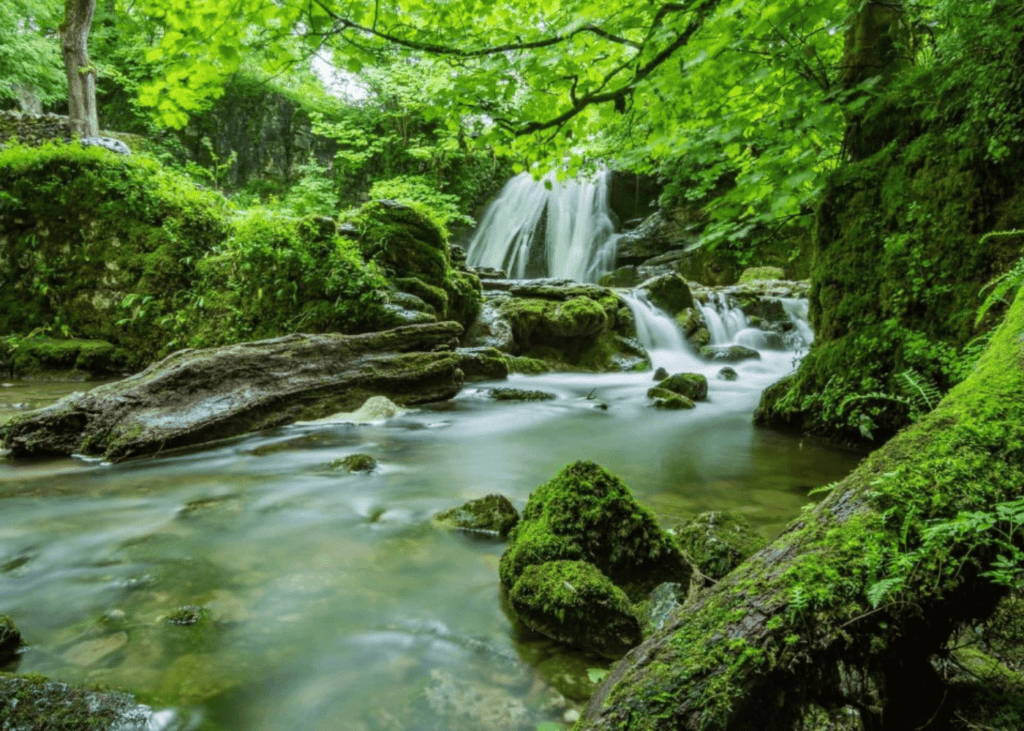
Lorentz National Park is located in the Papua province of Indonesia and is the largest national park in Southeast Asia, covering an area of 25,056 square kilometers.
The park is named after Hendrikus Albertus Lorentz, a Dutch explorer who led an expedition to the area in the early 20th century. Lorentz National Park is renowned for its biodiversity, with habitats ranging from snow-capped mountains to tropical rainforests.
You can visit Lorentz National Park can explore its diverse ecosystems through guided tours and treks. The park offers opportunities for hiking, bird watching, and wildlife spotting.
Accommodation options are limited within the park, so I would say kindly stay in nearby towns such as Wamena or Timika.
- Mount Wilhelmus: Trek to the summit of Mount Wilhelmus, the highest peak in the park, for stunning views of the surrounding mountains and glaciers.
- Paniai Lakes: Explore the pristine Paniai Lakes, known for their crystal-clear waters and diverse birdlife.
- Yali Falls: Visit Yali Falls, a series of beautiful waterfalls located within the park.
Due to its remote location and challenging terrain, visiting Lorentz National Park requires careful planning and preparation. It’s advisable to arrange tours and guides in advance and to be aware of the park’s regulations and conservation efforts.
#4. Ujung Kulon National Park
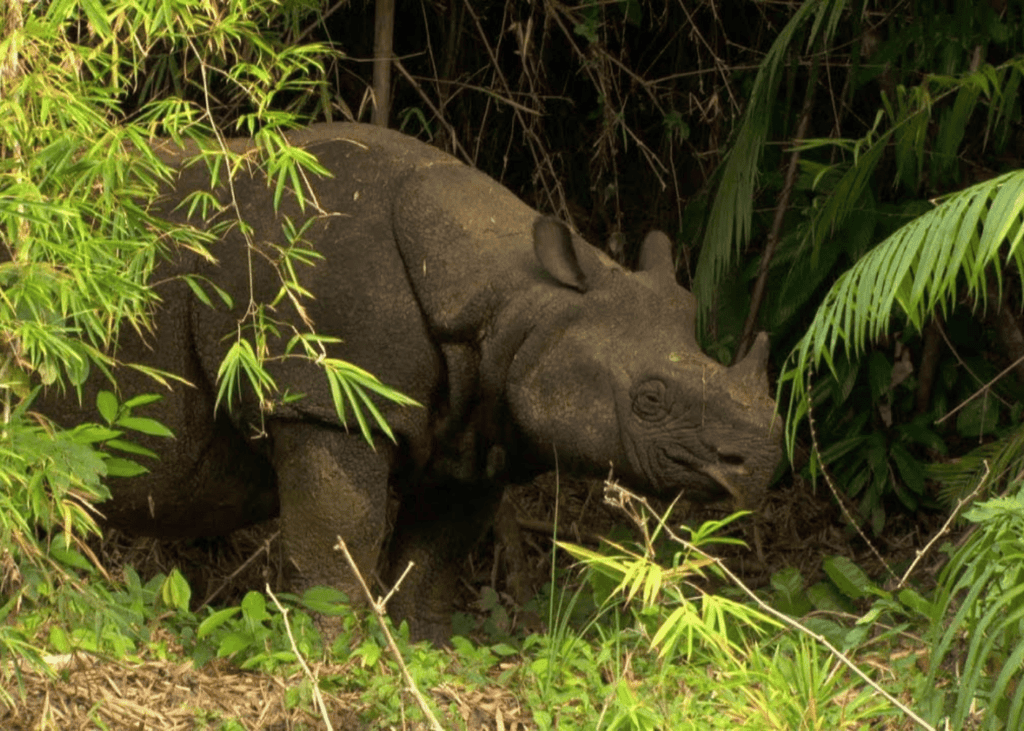
Ujung Kulon National Park is on the western tip of Java, Ujung Kulon National Park is a UNESCO World Heritage Site and is renowned for its pristine forests, mangrove swamps, and coral reefs.
The park is home to a variety of wildlife, including the endangered Javan rhinoceros, making it a haven for nature enthusiasts and conservationists.
Solo travelers visiting Ujung Kulon National Park can explore its diverse ecosystems through guided tours and treks. The park offers opportunities for hiking, bird watching, and wildlife spotting.
Accommodation options range from basic guesthouses to eco-friendly resorts, with most located in the nearby village of Taman Jaya.
Must-See Attractions
- Peucang Island: Explore the beautiful beaches and coral reefs of Peucang Island, located within the park.
- Handeuleum Island: Take a boat tour to Handeuleum Island to see the park’s mangrove forests and wildlife, including crocodiles and various bird species.
- Ujung Kulon Peninsula: Hike through the park’s dense forests to the Ujung Kulon Peninsula, where you can see the iconic Krakatoa volcano in the distance.
Due to its remote location and limited infrastructure, visiting Ujung Kulon National Park requires careful planning and preparation. Kindly plan or arrange tours and accommodation in advance, as facilities within the park are limited.
#5. Gunung Rinjani National Park
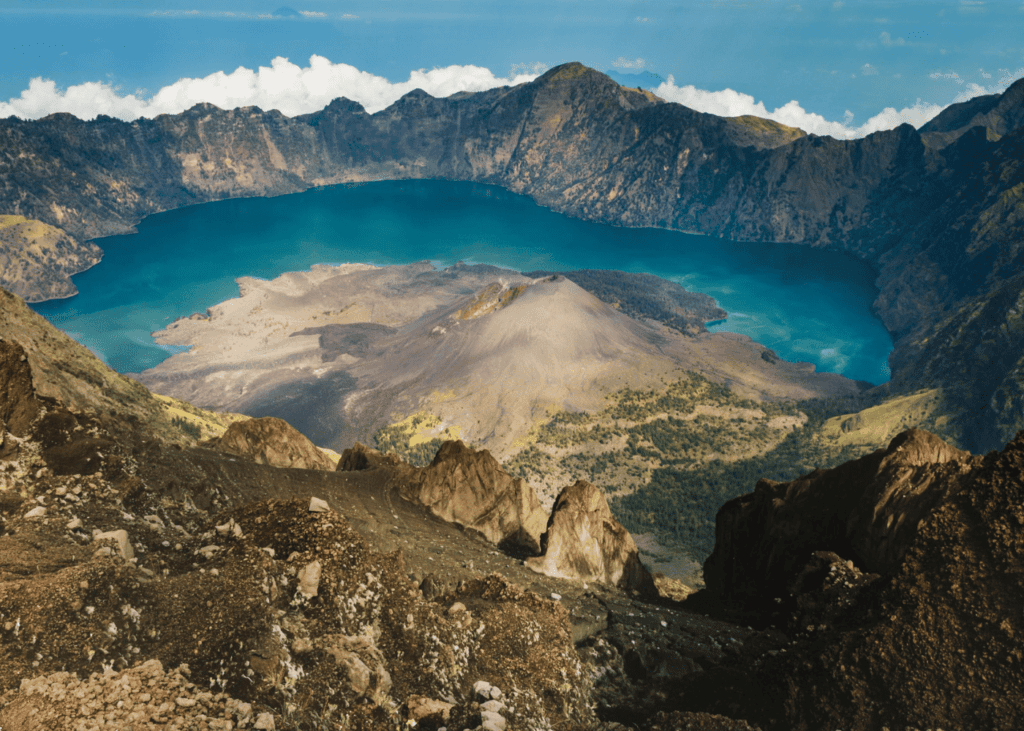
Gunung Rinjani National Park is on the island of Lombok, Gunung Rinjani National Park is dominated by Mount Rinjani, an active volcano and the second highest peak in Indonesia.
The park is known for its stunning landscapes, including volcanic craters, hot springs, and a large crater lake known as Segara Anak.
You can embark on multi-day treks to the summit of Mount Rinjani, which offer breathtaking views of the surrounding area. If you are not familiar then hire a guide for the trek, as the terrain can be challenging and weather conditions unpredictable.
Must-See Attractions
- Segara Anak: Visit the stunning crater lake of Segara Anak, which is believed to be sacred by the local Sasak people.
- Hot Springs: Relax in the natural hot springs near the lake, which are said to have healing properties.
- Senaru Village: Explore the traditional Sasak village of Senaru, which serves as the gateway to the park and offers insights into local culture and traditions.
#6. Tanjung Puting National Park

Tanjung Puting National Park is located in the Indonesian province of Central Kalimantan on the island of Borneo. The park is known for its diverse wildlife, including orangutans, proboscis monkeys, and gibbons, as well as its unique ecosystem of tropical rainforests and peat swamps.
There are boat tours along the Sekonyer River to observe wildlife and explore the park’s various habitats. Accommodation options range from basic guesthouses to eco-friendly lodges, with most located in the nearby town of Pangkalan Bun.
Must-See Attractions
- Camp Leakey: Visit Camp Leakey, a famous orangutan rehabilitation center within the park, and learn about conservation efforts to protect these endangered primates.
- Pondok Tanggui: Explore Pondok Tanggui, another orangutan rehabilitation center, where you can observe orangutans in their natural habitat.
- Klotok Boat Tours: Take a klotok, a traditional Indonesian riverboat, on a tour of the Sekonyer River to spot wildlife such as proboscis monkeys, crocodiles, and various bird species.
#7. Kerinci Seblat National Park

Kerinci Seblat National Park is located in the Sumatra province of Indonesia and is the largest national park on the island of Sumatra.
The park is known for its diverse flora and fauna, including the Sumatran tiger, rhinoceros, and elephant, as well as its stunning landscapes of mountains, lakes, and tropical rainforests.
Kerinci Seblat National Park offers opportunities for hiking, bird watching, and wildlife photography. Accommodation options range from basic guesthouses to eco-lodges, with most located in the nearby town of Sungai Penuh.
Must-See Attractions
- Mount Kerinci: Hike to the summit of Mount Kerinci, the highest volcano in Indonesia, for panoramic views of the surrounding area.
- Danau Gunung Tujuh: Explore Danau Gunung Tujuh, the highest lake in Southeast Asia, located within the park.
- Tapan Road: Drive along the scenic Tapan Road, which passes through the park and offers stunning views of the surrounding mountains and forests.
#8. Baluran National Park
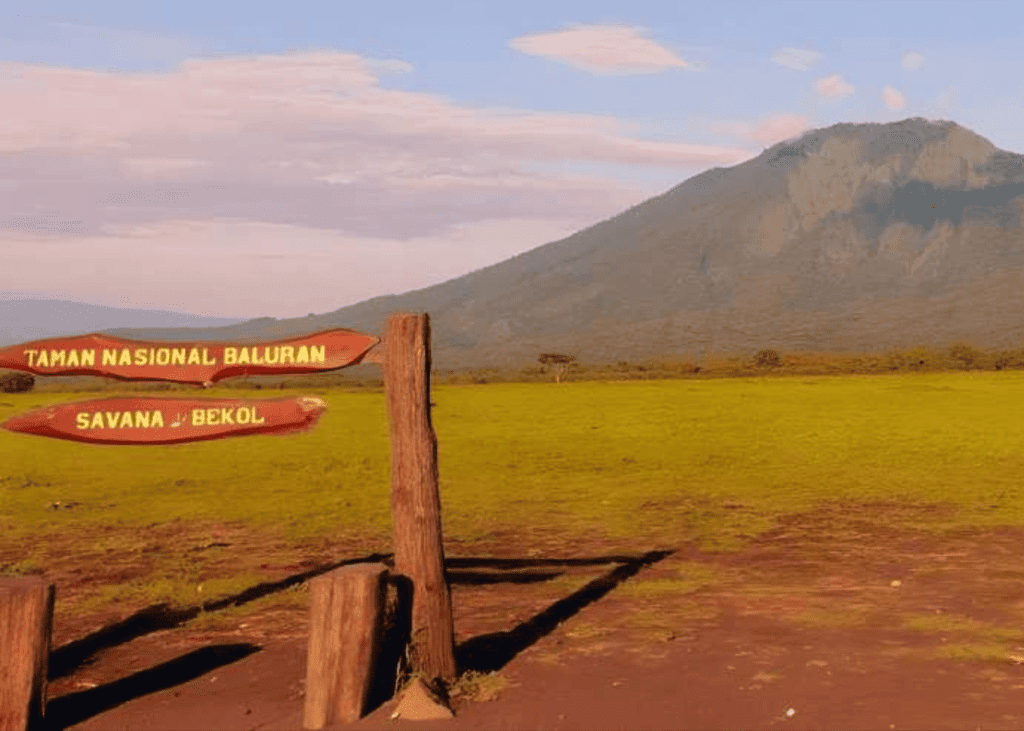
Baluran National Park is located on the northeastern tip of Java and is often referred to as “Africa van Java” due to its savannah-like landscape.
The park is home to a variety of wildlife, including deer, monkeys, and a wide range of bird species, which makes it a popular destination for nature lovers and photographers.
Baluran National Park has wildlife spotting, bird watching, and hiking. Accommodation options are limited within the park, so it’s advisable to stay in nearby towns such as Banyuwangi or Situbondo.
Must-See Attractions
- Bama Beach: Relax on the pristine white sand beaches of Bama Beach and enjoy stunning views of the Indian Ocean.
- Savana Bekol: Explore the savanna-like grasslands of Savana Bekol and spot wildlife such as deer and monkeys.
- Baluran Volcano: Hike to the top of the Baluran Volcano for panoramic views of the park and surrounding area.
#9. Mount Leuser National Park
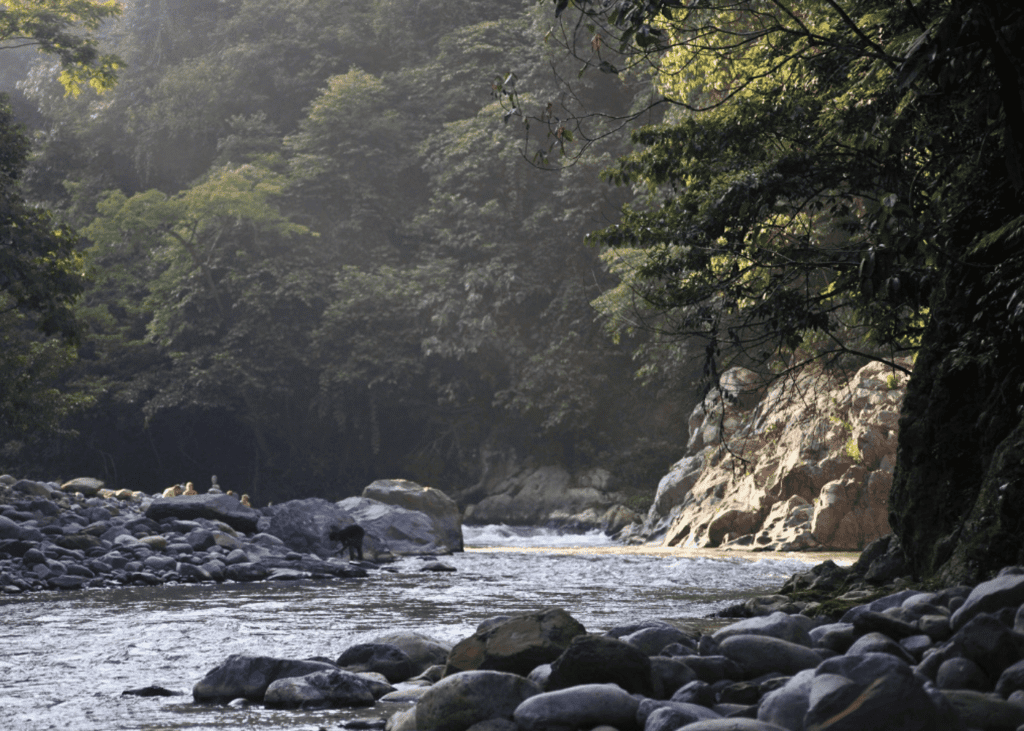
Mount Leuser National Park is located in the northern part of Sumatra and is one of the last places on earth where orangutans, rhinoceros, elephants, and tigers coexist in the wild.
The park is renowned for its biodiversity, with dense rainforests, rivers, and mountains providing a habitat for a wide range of plant and animal species.
You can enjoy Mount Leuser National Park and explore its diverse ecosystems through guided treks and wildlife spotting tours. The park offers opportunities for hiking, bird watching, and wildlife photography.
Must-See Attractions
- Orangutan Rehabilitation Centers: Visit orangutan rehabilitation centers such as Bukit Lawang and Ketambe, where you can observe orangutans in their natural habitat.
- Gunung Leuser: Hike to the summit of Gunung Leuser, the highest peak in the park, for stunning views of the surrounding rainforest.
- Bohorok River: Take a boat tour along the Bohorok River to spot wildlife such as monkeys, birds, and crocodiles.
#10. Bantimurung-Bulusaraung National Park

Bantimurung-Bulusaraung National Park is located in the South Sulawesi province of Indonesia and is known for its stunning waterfalls, limestone caves, and diverse wildlife.
The park is a popular destination for nature lovers and adventure seekers, offering opportunities for hiking, caving, and bird watching.
Bantimurung-Bulusaraung National Park offers opportunities for swimming in the crystal-clear waters of its waterfalls and exploring the limestone caves. Accommodation options are limited within the park, so it’s advisable to stay in nearby towns such as Makassar.
Must-See Attractions
- Bantimurung Waterfall: Visit Bantimurung Waterfall, known as the “Kingdom of Butterflies,” for its stunning beauty and abundance of butterflies.
- Limestone Caves: Explore the limestone caves of the park, such as Goa Batu Cermin and Goa Mimpi, which are home to unique rock formations and cave paintings.
- Bulusaraung Mountain: Hike to the summit of Bulusaraung Mountain for panoramic views of the park and surrounding area.
Final Words on Best National parks in Indonesia
Exploring Indonesia’s national parks has been an incredible journey for me due to it’s breathtaking landscapes, and unforgettable encounters with wildlife. From the lush rainforests of Tanjung Puting to the savannah-like grasslands of Baluran, each park has offered its own unique charm and beauty.
Traveling solo in Indonesia’s national parks has been a rewarding experience, allowing me to connect with nature, learn about conservation efforts, and immerse myself in the rich biodiversity of this beautiful country. I’ve met fellow travelers, experienced local cultures, and created memories that will last a lifetime.
So, pack your bags, lace up your hiking boots, and embark on your own adventure in Indonesia’s natural wonders. Trust me, it will be an experience you’ll never forget.
FAQs Related to National Parks in Indonesia
Is it safe to visit national parks in Indonesia as a solo traveler?
Yes, it is safe to visit national parks in Indonesia as a solo traveler. However, it’s important to take usual safety precautions, such as informing someone of your itinerary and sticking to marked trails.
Do I need a guide to visit national parks in Indonesia?
While not always required, having a guide can enhance your experience, especially in remote or challenging terrain. Guides can provide valuable insights into the area’s wildlife, culture, and history.
What should I pack for a visit to Indonesia’s national parks?
Pack lightweight and breathable clothing, sturdy hiking shoes, insect repellent, sunscreen, a hat, a rain jacket, and plenty of water. Don’t forget your camera for capturing the stunning landscapes and wildlife.
How do I get to Indonesia’s national parks?
You can reach many parks by taking a combination of flights, buses, and/or boats, followed by local transportation or guided tours to the park entrance.
What is the best time of year to visit Indonesia’s national parks?
The dry season (April to October) is the best time for trekking and wildlife spotting, while the wet season (November to March) may offer lush landscapes and fewer tourists.
What should I do in case of an emergency while visiting Indonesia’s national parks?
In case of an emergency, seek help from park rangers or local authorities. It’s important to have travel insurance that covers medical evacuation in remote areas.

